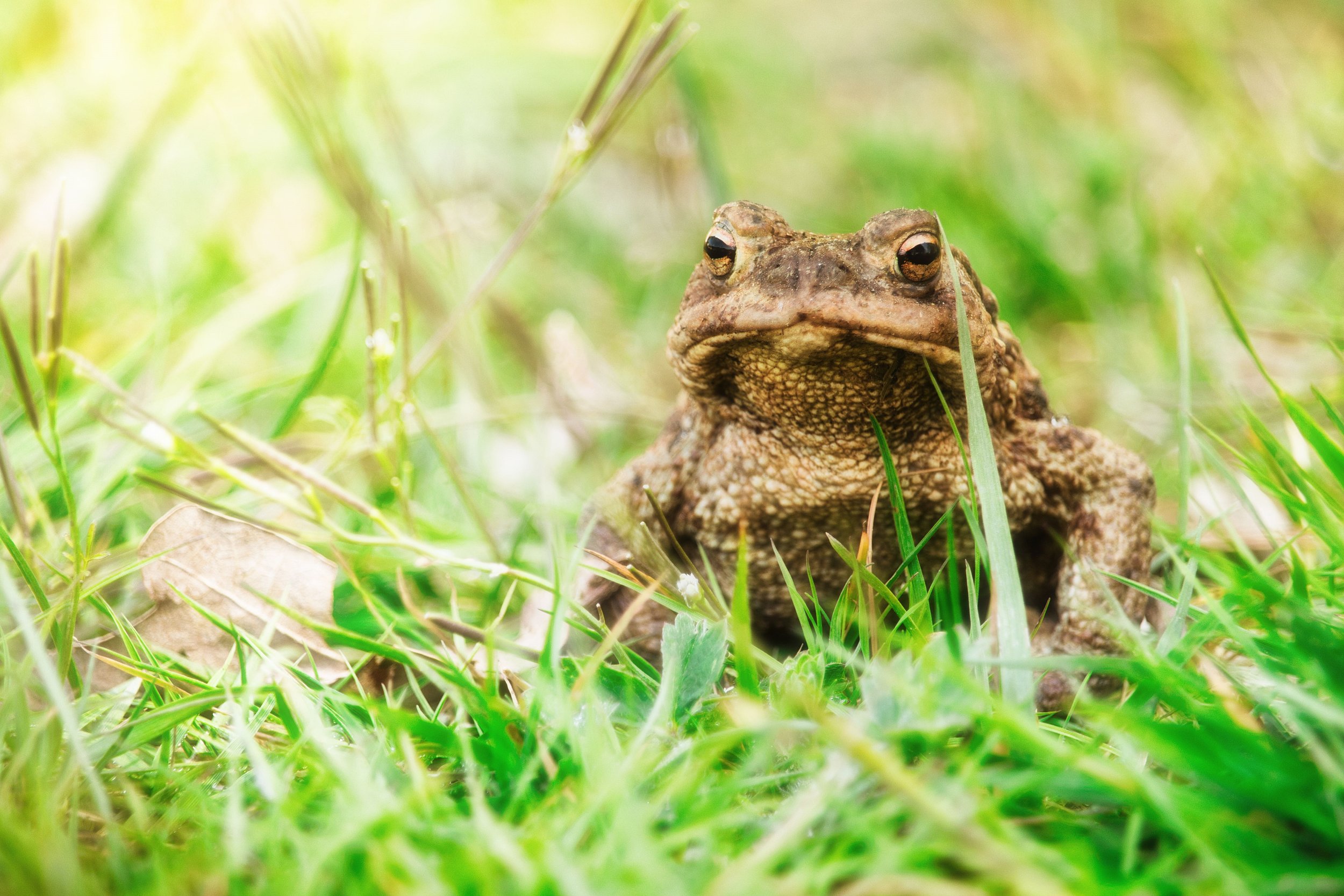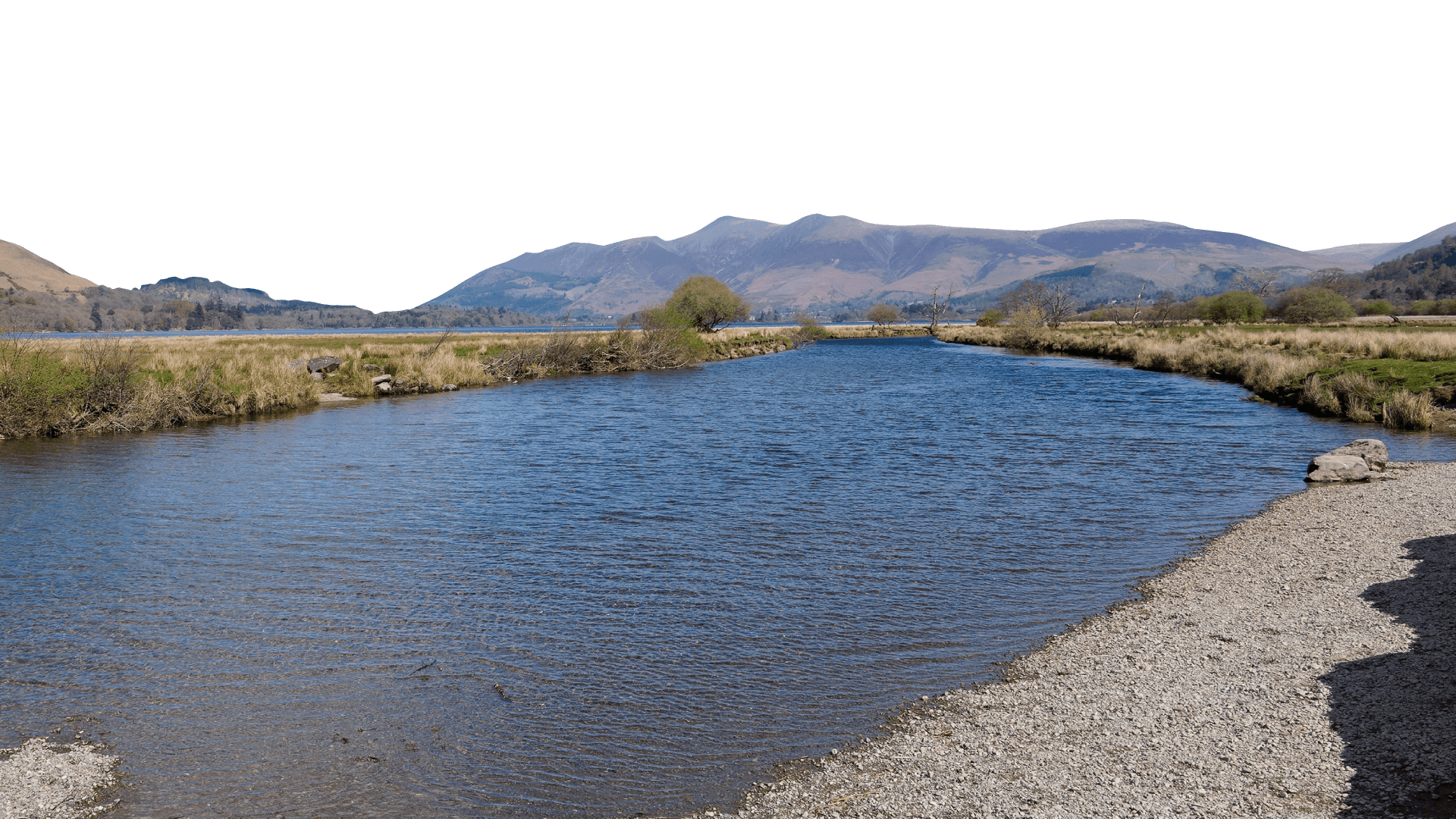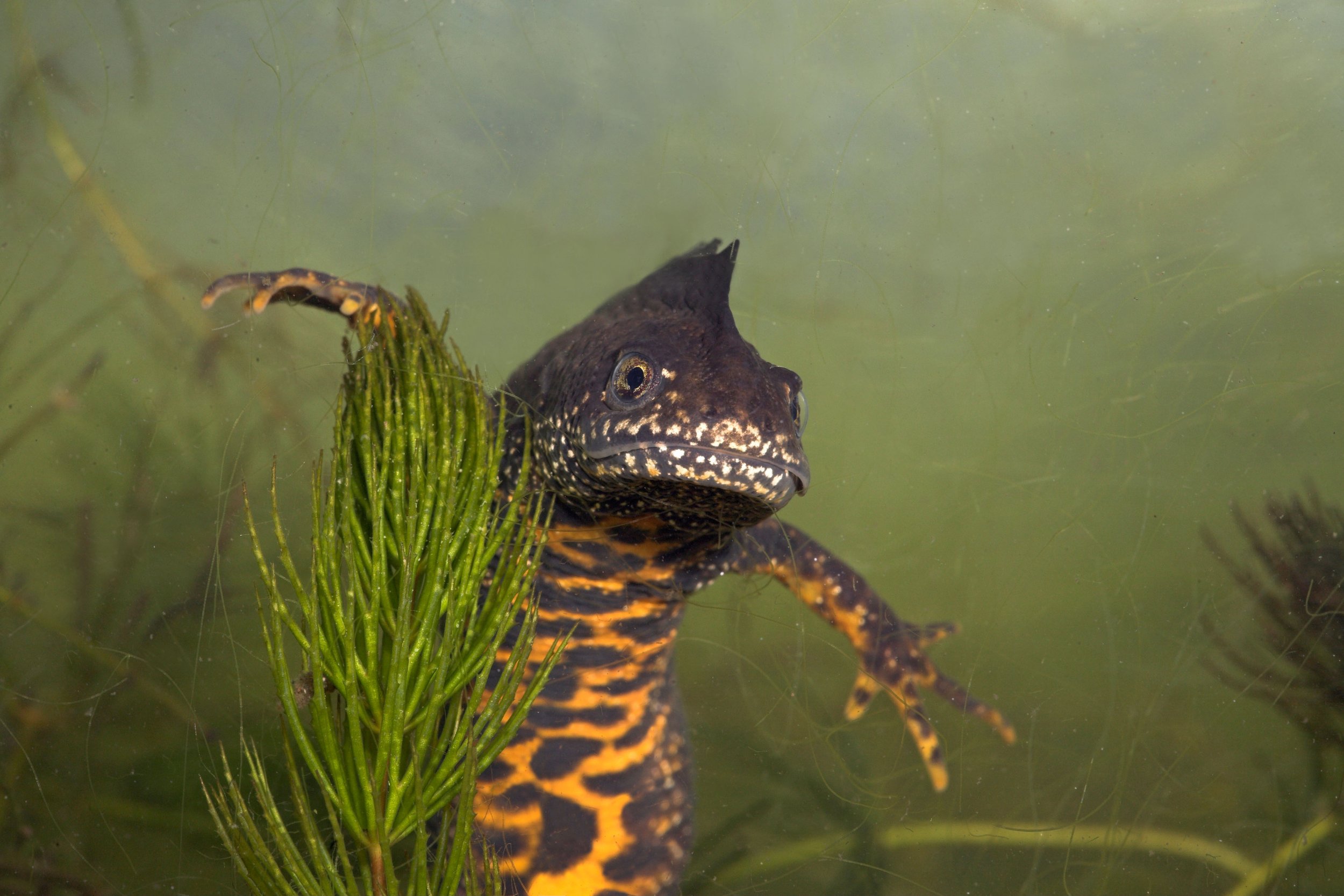
Amphibians
Amphibians are very important animals in the wetland food chain. They are both predator and prey for a huge range of creatures. They have smooth skin and are cold-blooded. They lay eggs in water and their young hatch as larvae with long tails and gills so that they can breathe underwater, before developing lungs and metamorphosing to live a four-legged life on land.
There are seven species of frogs, toads and newts native to the UK, six of which can be found here in Cumbria.
Common Frog
(Rana temporaria)
Found throughout the UK, they have smooth skin and long legs, perfect for hopping. Varying hugely in colour, they have dark spots and stripes and a ‘mask’ behind the eye. Tadpoles are a speckly golden-brown and often seen in large clumps at the surface.
Common Toad
(Bufo bufo)
They have flat, broad bodies and warty, dry skin and are often a dark sandy colour. They usually crawl rather than hop and are famous for migrating en-masse in early spring to their breeding ponds after emerging from their winter hibernation. See our yearly Toad Patrol if you’d like to help them cross the road safely! Toadspawn is laid in long strings with the tadpoles a solid black colour.
Smooth Newt
(Lissotriton vulgaris)
Also called the ‘common’ newt, you are most likely to come across this newt species in your garden pond. They are smaller than the great crested newt with similar belly markings and males have a wavy crest in the breeding season. Single eggs are laid, wrapped in a leaf. You can distinguish newt larvae from toad and frog tadpoles as they have feathered gills.
Natterjack Toad
(Epidalea calamita)
The Cumbrian coast is home to around 50% of all Natterjack Toad sites in the country. These rare toads are smaller than the common toad and more olive-green, with a yellow stripe running down their back. They like sandy dunes and heaths and tend to run instead of walk or hop, giving them a nickname ‘running toad’. They lay spawn in long strings with one row of eggs per string. The males sing together at night to attract females and can be heard up to a mile away.
Palmate Newt
(Lissotriton helveticus)
Palmate newts are very similar to the smooth newt, but are a rarer find. They prefer shallow pools on acidic soils such as upland, heathland and moorland. They have some spots on their belly but none on the throat, unlike the smooth newt. During the breeding seasons the males develop black webbing on their feet. Eggs are laid singly on plants.
Great Crested Newt
(Triturus cristatus)
Our biggest newt can get to be 15cm long. They are mostly black with warty skin, white-spotted sides and a bright orange belly. Males have a long wavy crest along the body and tail during the breeding season. They can be a rare find depending where you are in the country due to habitat loss. In Spring females lay eggs one by one inside the leaves of aquatic plants.
They are designated and protected as European protected species (EPS). EPS are protected under the Conservation of Habitats and Species Regulations 2017. It is an offence to: deliberately kill, injure, disturb or capture them.






